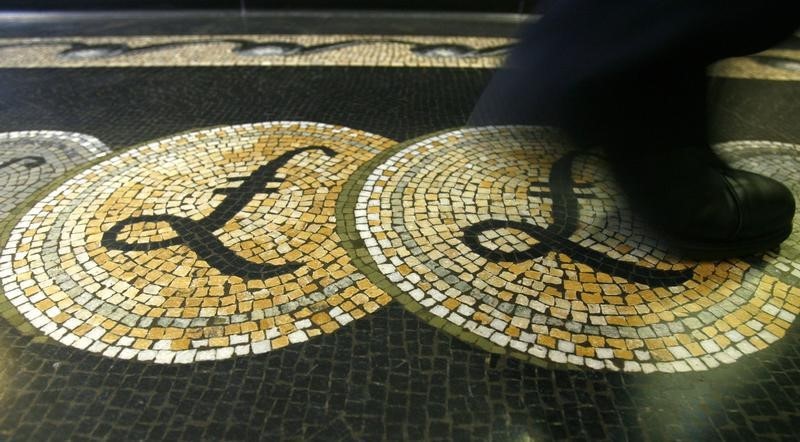Investing.com - The pound rose to session highs against the softer dollar on Wednesday after data showed that U.K. industrial output was stronger than expected in April, but manufacturing output declined unexpectedly.
GBP/USD hit highs of 1.5471, the most since May 26, up from around 1.5442 ahead of the data.
The Office for National Statistics said industrial output rose by 0.4%, ahead of forecasts for a 0.1% increase, following an upwardly revised increase of 0.6% in March.
The data added to hopes that the economy is regaining momentum in the current quarter after a lackluster first quarter.
But the report showed that manufacturing production fell 0.4%, reversing the previous month’s gains. The decline in manufacturing production was largely due to a 6% fall in pharmaceuticals output.
The dollar remained broadly lower as gains in the euro and the yen weighed.
The U.S. dollar index, which measures the greenback’s strength against a trade-weighted basket of six major currencies, was down 0.49% to 94.35.
The euro moved higher as a selloff in European government bonds continued, with German 10-year bund yields rising to the highest levels since September 2014 earlier Wednesday.
German bund yields act as benchmarks for European financial markets and higher yields push the euro higher against the dollar. Yields rise as prices fall.
EUR/USD was last at 1.1312, holding below session highs of 1.1385. The single currency was lower against the pound, with EUR/GBP easing to 0.7317.
The euro remained under pressure as concerns over Greece’s deadlocked debt negotiations weighed.
On Tuesday European officials dismissed economic reforms put forward by Athens, saying they did not do enough to meet creditors’ demands.
Athens was expected to resume talks on a cash-for-reforms deal with its international lenders later in the day.
Greece’s bailout agreement with the European Union and the International Monetary Fund is set to expire at the end of this month and it cannot make further debt repayments without a new deal.
The yen remained broadly higher after Bank of Japan Governor Haruhiko Kuroda suggested Wednesday that the relative value of the yen may not continue to fall.
Kuroda said the real effective exchange rate showed that the yen's levels were “significantly low".
The real effective exchange rate measures the yen’s levels relative to the currencies of Japan’s trading partners.
Kuroda also said the dollar may not necessarily rise further against the yen if the Federal Reserve raises interest rates, as the possibility of rate hikes is already priced into the market.
USD/JPY was down 1.34% to two-week lows of 122.68, well below the 13-year peaks of 125.84 struck last Friday after an above forecast U.S. jobs report underlined expectations that the Fed could start to raise rates at its September meeting.
